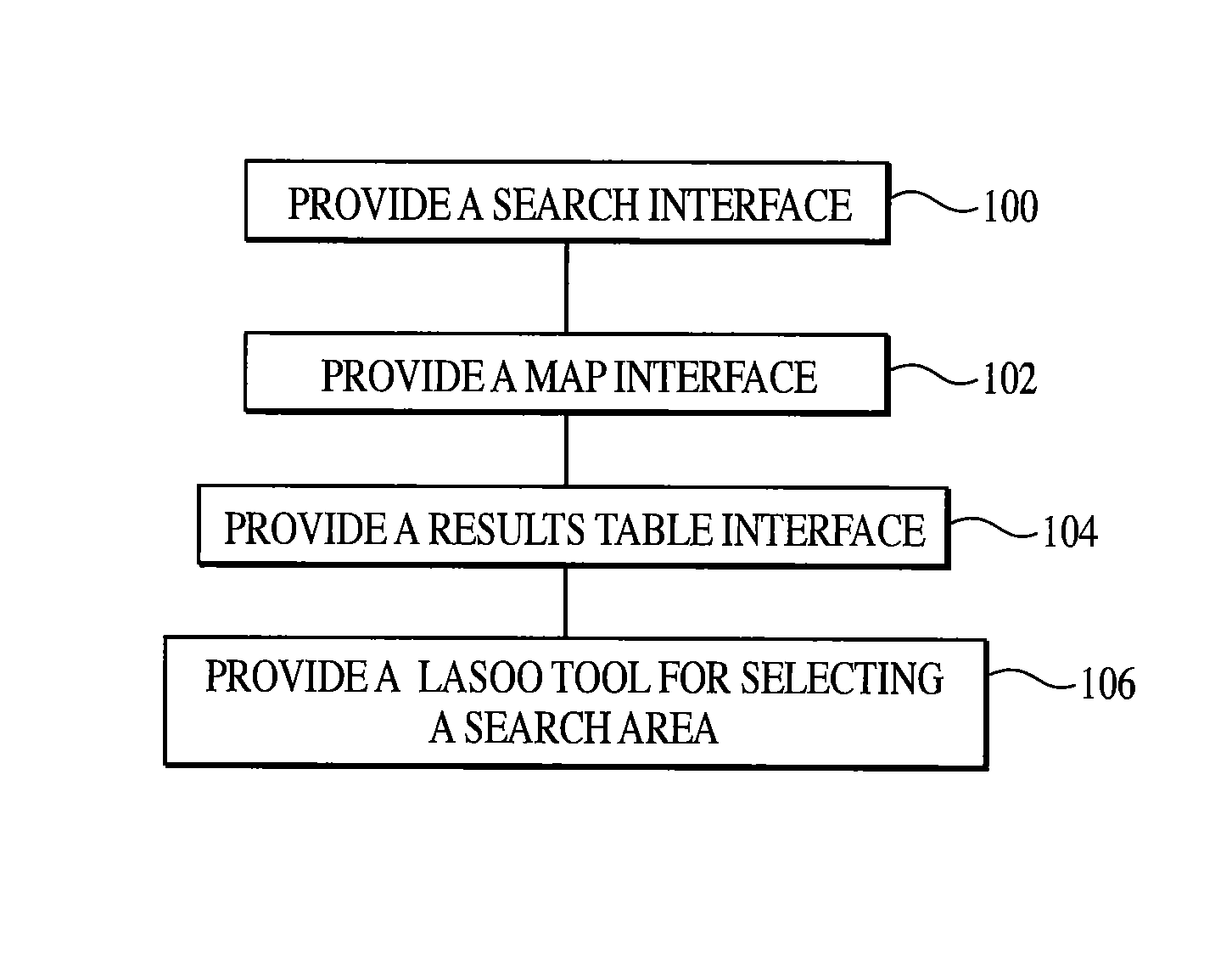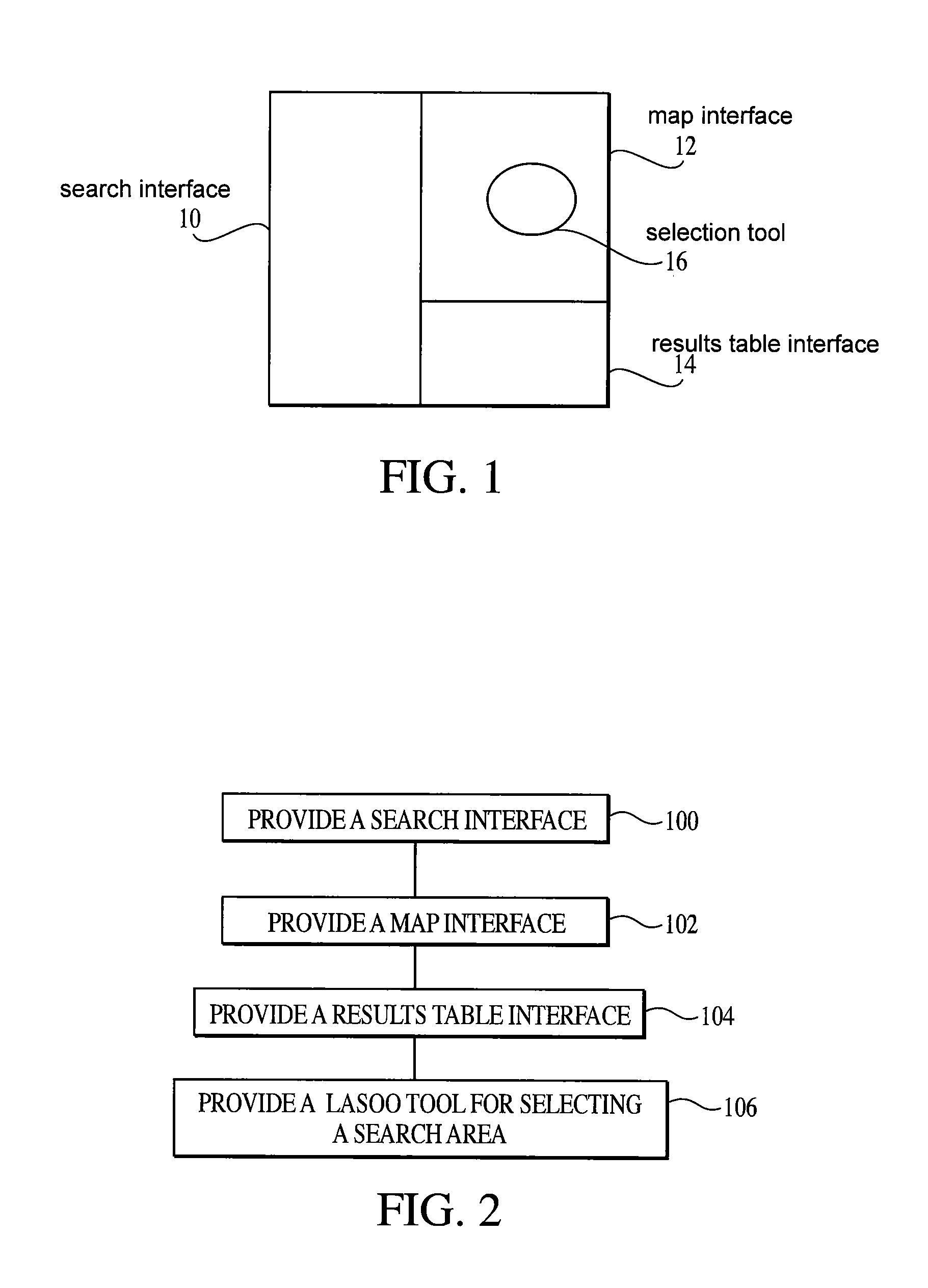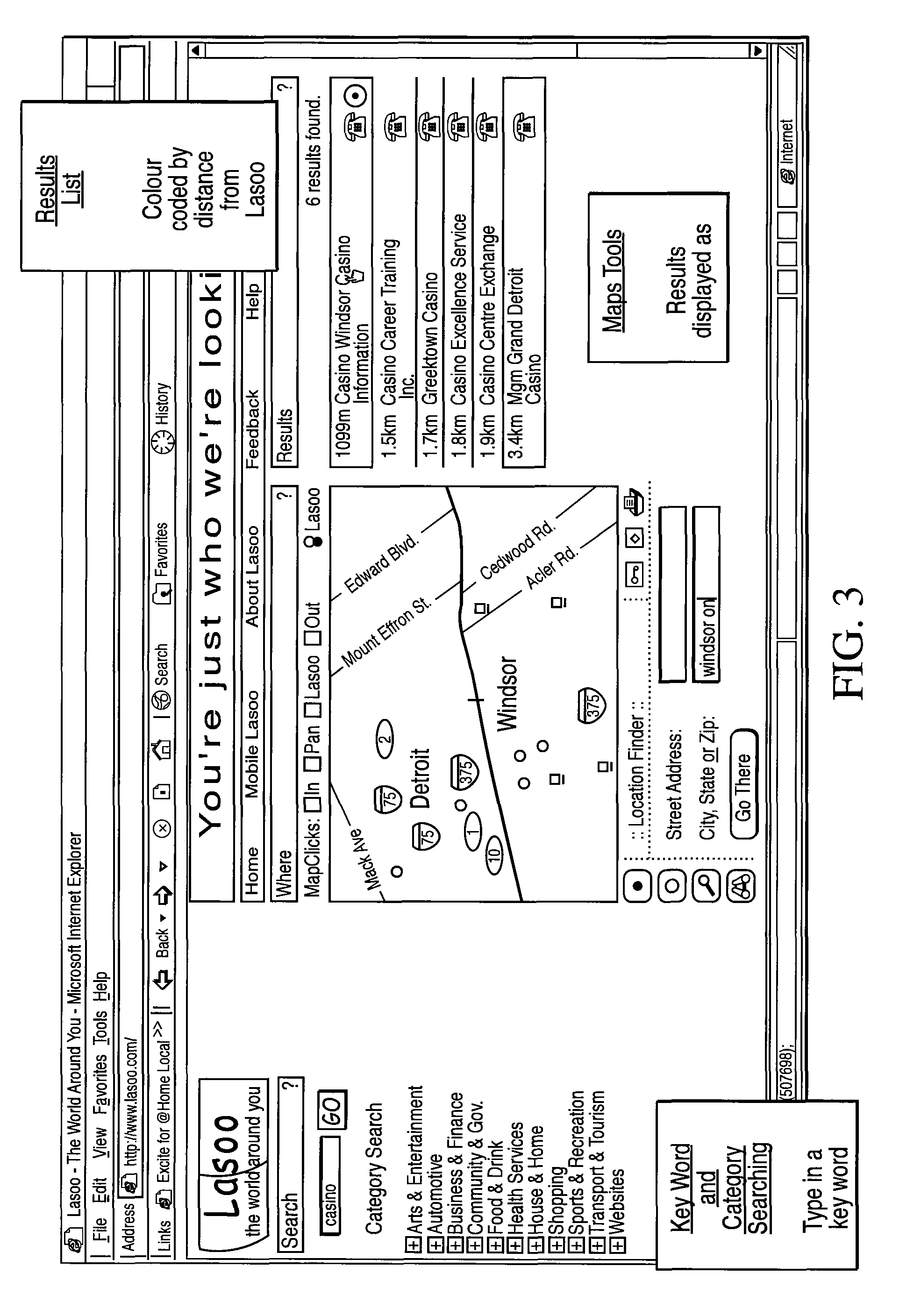Information retrieval system and method employing spatially selective features
a technology of information retrieval and spatial selection, applied in the field of information retrieval systems, can solve the problems of inability to achieve high-performance spatial search and retrieval capabilities of the internet, inability to find local content on the internet today, and inconvenient use, so as to remove the barriers to local content quickly and easily. , the effect of fast results
- Summary
- Abstract
- Description
- Claims
- Application Information
AI Technical Summary
Benefits of technology
Problems solved by technology
Method used
Image
Examples
Embodiment Construction
[0028]The present invention is directed to an information retrieval system and method employing spatially selective features. As illustrated in FIG. 1, the system includes a search interface 10, a map interface 12, a results table interface 14, and a selection tool 16 for selecting a search area. As illustrated in FIG. 2, the method includes the steps of providing a search interface 100, providing a map interface 102, providing a results table interface 104, and providing a selection tool 106 for selecting a search area.
Search Interface
[0029]Embodiments of the Search Interface 10 include a Polygon Search Module (PSM), an Internet Database Link Control Module (IDLCM), an Auto Range Determination Module (ARDM), Extended Range Record Module (ERRM) and a Dynamic Filter (DF). As will be described below, various embodiments include various combinations of these modules to provide particular functionality.
[0030]The Polygon Search Module (PSM) enables the definition and storage of any geo-s...
PUM
 Login to View More
Login to View More Abstract
Description
Claims
Application Information
 Login to View More
Login to View More - R&D
- Intellectual Property
- Life Sciences
- Materials
- Tech Scout
- Unparalleled Data Quality
- Higher Quality Content
- 60% Fewer Hallucinations
Browse by: Latest US Patents, China's latest patents, Technical Efficacy Thesaurus, Application Domain, Technology Topic, Popular Technical Reports.
© 2025 PatSnap. All rights reserved.Legal|Privacy policy|Modern Slavery Act Transparency Statement|Sitemap|About US| Contact US: help@patsnap.com



